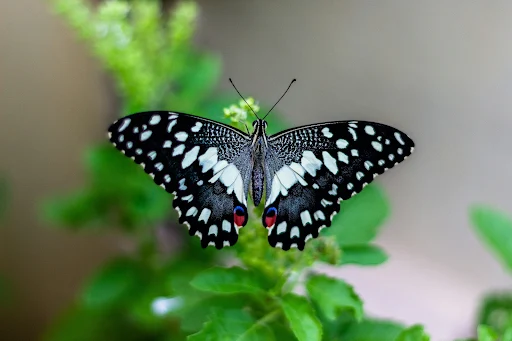The Beautiful World of Butterflies: Nature’s Delicate Wonders
Butterflies are among the most enchanting creatures in the natural world. With their vibrant colors, graceful flight, and delicate wings, they symbolize transformation, hope, and beauty. Found in every continent except Antarctica, butterflies play vital roles in ecosystems, gardens, and human cultures.
In this article, we will explore the fascinating life of butterflies, their life cycle, importance in nature, different species, and interesting facts that make these insects truly remarkable.
What Is a Butterfly?
A butterfly is an insect that belongs to the order Lepidoptera, which also includes moths. The word "Lepidoptera" means "scale wings" in Greek, referring to the tiny overlapping scales that cover their wings. These scales reflect light and give butterflies their stunning colors and patterns.
Butterflies are cold-blooded, meaning they rely on the sun to warm up their bodies. They are most active during the day and can often be seen fluttering from flower to flower in search of nectar.
The Butterfly Life Cycle: From Egg to Adult
One of the most fascinating aspects of butterflies is their life cycle. They go through a complete metamorphosis with four distinct stages:
1. Egg
The life of a butterfly begins as a tiny egg, usually laid on a leaf by the adult female. Different species prefer different host plants. The egg stage lasts a few days, depending on the species and temperature.
2. Caterpillar (Larva)
Once the egg hatches, a caterpillar emerges. This is the feeding stage. The caterpillar's primary goal is to eat as much as possible to prepare for the next stage. It grows rapidly, shedding its skin several times as it becomes too tight.
3. Chrysalis (Pupa)
After the caterpillar has grown enough, it forms a chrysalis or pupa. Inside this casing, the caterpillar undergoes a miraculous transformation. Its body dissolves and reorganizes into the shape of an adult butterfly. This stage can last from a week to several months.
4. Adult Butterfly
The final stage is the adult butterfly. After emerging from the chrysalis, it pumps blood into its wings and waits for them to dry before taking flight. The adult's main purpose is to reproduce and continue the life cycle.
Why Butterflies Are Important
Butterflies are not just beautiful—they are essential to the environment and biodiversity. Here are some of the key reasons why:
1. Pollination
Like bees, butterflies are important pollinators. As they feed on nectar, they transfer pollen from one flower to another, helping plants reproduce. This is crucial for food crops, wildflowers, and many types of trees.
2. Food Source
Butterflies are part of the food chain. Birds, spiders, lizards, and other animals depend on butterflies and caterpillars as a food source.
3. Environmental Indicators
Butterflies are sensitive to changes in the environment. A decrease in butterfly populations can indicate problems such as climate change, habitat loss, or pollution.
Types of Butterflies Around the World
There are more than 20,000 species of butterflies across the globe, each with unique colors, patterns, and behaviors. Here are some popular and well-known species:
1. Monarch Butterfly
Known for its long migration, the Monarch travels up to 3,000 miles between North America and Mexico. Its bright orange wings with black borders make it easy to identify.
2. Swallowtail Butterfly
Swallowtails are large and colorful butterflies with tail-like extensions on their hindwings. They are found in almost every continent.
3. Blue Morpho
Native to Central and South American rainforests, the Blue Morpho is famous for its bright, iridescent blue wings that reflect light like a mirror.
4. Painted Lady
This butterfly has a worldwide distribution and can adapt to various climates. Its orange, black, and white wings make it a common sight in gardens.
Interesting Facts About Butterflies
Butterflies taste with their feet. Their feet contain sensors that allow them to detect the chemical composition of plants.
They can't fly if they're cold. Butterflies need a body temperature of at least 85°F (29°C) to fly.
Some butterflies live only a few days. While some species live for months, others only survive for a week or two.
They see ultraviolet light. Butterflies can perceive UV light, which helps them find nectar and identify mates.
Migration is common. Many species, especially the Monarch, migrate thousands of miles to escape cold weather and find suitable breeding grounds.
How to Attract Butterflies to Your Garden
If you love butterflies and want to see more of them, consider creating a butterfly-friendly garden. Here's how:
1. Plant Native Flowers
Butterflies are attracted to bright, nectar-rich flowers. Choose a variety of native plants that bloom throughout the year.
2. Avoid Pesticides
Chemical pesticides can harm butterflies and caterpillars. Try using natural pest control methods instead.
3. Provide Host Plants
Caterpillars need specific host plants to feed on. For example, Monarch caterpillars feed exclusively on milkweed.
4. Add Water Sources
Butterflies also need water. You can provide shallow dishes with wet sand or pebbles for them to sip from.
Threats to Butterfly Populations
Sadly, butterfly populations around the world are declining due to several factors:
Habitat loss: Urban development and agriculture reduce the natural habitats butterflies need to survive.
Pesticide use: Chemicals harm butterflies, caterpillars, and their host plants.
Climate change: Rising temperatures and unpredictable weather patterns affect migration and breeding cycles.
Pollution: Air and water pollution can destroy the delicate ecosystems butterflies rely on.
Conclusion
Butterflies are not just symbols of beauty—they are vital components of the natural world. From their miraculous metamorphosis to their essential role in pollination and biodiversity, butterflies remind us of the magic and fragility of life on Earth.
Protecting butterflies means protecting nature itself. Whether by planting a garden, supporting conservation efforts, or simply learning more about them, each of us can play a part in ensuring that these winged wonders continue to flutter across fields and forests for generations to come.





No comments:
Post a Comment